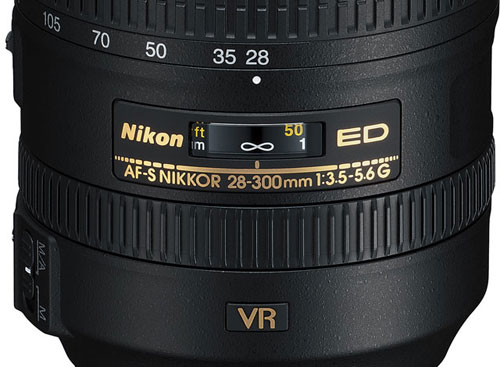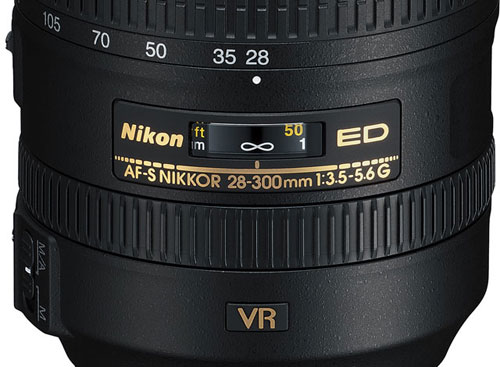What Does A And M Mean On Nikon Lens? A stands for Auto Focus, and M for Manual Focus on a Nikon lens. These markings indicate the focusing modes.
Nikon lenses feature various settings and switches, with “A” representing Auto Focus mode, enabling the camera’s autofocus system to adjust the lens for sharp images. The “M” sets the lens to Manual Focus mode, allowing photographers to fine-tune focus by hand.
This functionality is critical for achieving precision in various shooting conditions. Auto Focus is often used in fast-paced scenarios or when quick adjustments are necessary, while Manual Focus gives more control to the photographer, often preferred in macro, portrait, or landscape photography where the utmost focus accuracy is desired. Understanding these settings enhances creative control and contributes to capturing stunning photographs.

Credit: digital-photography-school.com
Decoding A And M On Nikon Lenses
Nikon lenses come with a variety of letters. These letters tell you about the lens features. “A” and “M” play a key role. They relate to focusing modes. Let’s decode what each means for photographers.
The Alphabet Of Photography
In photography, every letter on your lens has a purpose. Nikon uses letters as shortcuts. They give info about the lens functions and specs. The letters can seem like a puzzle. But understanding them helps you use your lens better.
A Glance At Nikon’s Lens Terminology
Nikon’s lens terminology is full of abbreviations. Here, we focus on two important ones: “A” and “M”. “A” stands for Auto Focus. It lets the camera focus for you. “M” means Manual Focus. You adjust the focus by hand. Some Nikon lenses have an “A/M” switch. This switch lets you quickly change between the two modes.
| Term | Meaning |
|---|---|
| A | Auto Focus |
| M | Manual Focus |
- Auto Focus (A): The camera focuses automatically.
- Manual Focus (M): The photographer adjusts the focus manually.
When you turn the lens switch to A, autofocus takes over. It’s great for quick shots. Change to M when you need precision. It’s perfect for close-ups or creative effects. The A/M switch lets you be in control.

Credit: www.lightroompresets.com
Focus Modes: Auto And Manual Explained
Nikon lenses are equipped with two primary focusing systems, denoted by ‘A’ and ‘M’. ‘A’ stands for Auto Focus, where the camera does the focusing for you. ‘M’ represents Manual Focus, giving you full control over the focus ring. Learning when and how to use these settings can transform your photography.
Switching Between Sharpness Strategies
Transitioning between focus modes is a breeze. Nikon lenses come with a simple switch on the barrel. Flick this switch and toggle between Auto and Manual modes with ease. It’s essential for shooting in various scenarios.
When To Use Auto Vs. Manual Focus
- Use Auto Focus when action is fast-paced. It ensures sharp images in sports and wildlife photography.
- Opt for Manual Focus for precision in static scenes. It’s perfect for macro or portrait shots where detail is key.
The Significance Of A-m Switch
Nikon lenses come with an A-M switch that stands for autofocus and manual focus modes. This small but crucial feature allows photographers to switch between modes quickly. Understanding this function is key to fully utilizing your Nikon lens.
Avoiding Focus Mishaps
The A-M switch plays a vital role in preventing focus problems. Sometimes cameras can’t find focus on the right object. Here are benefits of using the switch to avoid such mishaps:
- Prevent Accidental Changes: Locks the focus to stop unintended shifts during shooting.
- Quick Focus Fixes: Easily switch to manual to refine the focus yourself.
- Save Time: Fixing focus faster keeps you ready for the next shot.
Enhancing Creative Control
Creativity flourishes when you take control. The A-M switch lets photographers dictate focus for creative results. Here’s what it does for your creative control:
- Manual Precision: Achieve the exact focus your vision requires.
- Adapt to Situations: Change focus mode to suit different scenarios.
- Potential to combine autofocus convenience with manual refinements.
Working With Nikon’s A-m Functionality
Understanding Nikon’s lens capabilities enhances your photography skills. Nikon lenses with A-M mean you have AutoFocus and Manual modes. You switch between these modes with ease. AutoFocus or ‘A’ lets your camera focus for you. For greater control, switch to ‘M’ or Manual Focus. This flexibility caters to diverse shooting environments and creative demands.
Step-by-step Guide To Using A And M Modes
To switch between modes, follow these simple steps:
- Locate the ‘A-M’ switch on your Nikon lens. It’s often on the side of the lens barrel.
- To engage AutoFocus, slide the switch to ‘A’.
- Want full control? Slide it to ‘M’ for Manual Focus.
- In ‘M’, rotate the focus ring yourself until your subject sharpens.
Common Questions About A And M On Nikon
Users often have queries regarding the A and M modes. Here are some answers:
- “Can I switch while the camera is on?” Yes, but avoid doing it during actual focusing to prevent damage.
- “Does A mode work with all subjects?” A mode is great for most situations, but struggle with low contrast scenes.
- “When should I use M mode?” Use M when you need precision, like in macro or portrait shots.
Remember these tips for flawless focus control with Nikon’s A-M functionality.
Tips For Mastering Focus On Your Nikon
Mastering the focus system of a Nikon camera can transform your photography. Each lens, like the Nikon A and M versions, offers unique features. ‘A’ stands for autofocus, and ‘M’ for manual focus. Understanding when and how to use these settings is crucial for sharp, stunning images. Here, you’ll find easy-to-follow tips and techniques to get the best focus in any situation, as well as how to keep your lens in top condition.
Achieving Optimal Focus In Various Shooting Scenarios
Sharp focus is key to capturing the moment perfectly. Here’s how you can achieve it:
- Use autofocus (A) on moving subjects like playful pets or athletes.
- Switch to manual (M) for landscapes where you have time to refine your shot.
- Adjust the focus point to highlight your main subject in the frame.
- Experiment with AF modes – single, continuous, and auto select, for best results based on your scenario.
- Practice focusing on both still and moving subjects to get a feel for your lens.
Best Practices For Lens Care And Maintenance
A well-maintained lens ensures lasting quality focus. Follow these best practices:
| Care Step | Description |
|---|---|
| Regular Cleaning | Use a soft lens brush or air blower to remove dust. |
| Moisture Protection | Store lenses with silica gel packs to prevent fungus. |
| Cap On | Keep the lens cap on when not in use to avoid scratches. |
| Proper Storage | Store your lenses in a padded bag away from direct sunlight. |
| Regular Checks | Inspect for any damage or irregularities periodically. |

Credit: www.nikonusa.com
Technological Evolution Of Nikon Lenses
Understanding the technological evolution of Nikon lenses reveals a journey of innovation and precision. From the early days of manual focus, today’s Nikon lenses embody complex tech. This evolution not only reflects in the sophisticated optics but also in the markings on the lenses. ‘A’ stands for Auto Aperture and ‘M’ for Manual Aperture, indicating the mode of operation. Here’s how Nikon lenses transformed over time.
From Manual To Autofocus: A Brief History
Nikon’s evolution of lenses is a tale of constant improvement. In the past, photographers manually adjusted focus. This required skill and time. Nikon then introduced the AI system (Aperture Indexing), enabling lens compatibility with auto-exposure cameras. Later, Nikon added AF (Autofocus) to lens technology. This allowed lenses to focus automatically, with ‘A’ indicating the lens could communicate aperture info to the camera body. Fast forward, we now have AF-S and AF-P lenses with silent, precise focusing motors.
Future Trends In Lens Technology
Anticipating future trends in lens tech yields exciting possibilities. Nikon strives for sharper images and faster focusing. Expect AI integration, that will intuitively adapt to shooting scenarios for optimal performance. New materials may lead to lighter and more durable lenses. Connectivity, like Bluetooth and Wi-Fi, could sync lenses with other devices for seamless operation. Stay tuned as Nikon paves the way for advanced photography experiences.
Frequently Asked Questions For What Does A And M Mean On Nikon Lens
What Do A And M Stand For On Nikon Lenses?
A on Nikon lenses stands for “Auto,” indicating the lens features an autofocus system. M stands for “Manual,” allowing the photographer to focus the lens by hand. Switching between these modes gives users control over the focusing method.
How Does The A Setting Improve Photography?
The A setting enables the camera’s autofocus system, offering quick and precise focusing. It’s especially useful in fast-paced shooting situations or when precision is paramount, such as in wildlife or sports photography.
Can You Use Autofocus In M Mode?
In M mode, autofocus is disabled, and manual focus is required. However, if your Nikon lens has an M/A mode, you can override autofocus manually without switching to M, providing additional focusing control.
What Advantages Does Manual Focusing Offer?
Manual focusing gives the photographer full control, making it ideal for macro, portrait, or landscape photography where precision is key. It allows for adjustments that autofocus may not always accurately make, like focusing on a specific detail.
Conclusion
Understanding your Nikon lens’s ‘A’ and ‘M’ modes is crucial for optimal control. ‘A’ unlocks aperture-priority for depth-of-field creativity, while ‘M’ presents manual mastery over exposure. Whether you’re an amateur or pro, harnessing these settings can transform your photography. Ready to explore your lens’s potential?
The power is at your fingertips.


